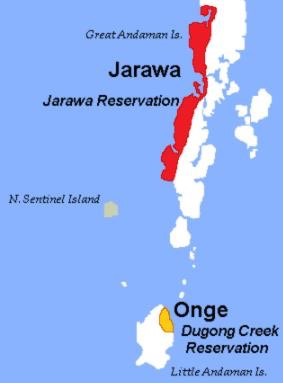Population and Human Settlements Mains Test
Mains Test Series
Population and Human Settlements
Q. Write a Short note on Jarawas, Todas and Santhals.
The Jarawa
The Jarawas are indigenous people of the Andaman and Nicobar Island and is home to the Negrito tribe (Jarawa).
- Location: They primarily live in South Andaman and Middle Andaman Islands, with a total population of 240 as per the 2001 census.

- Isolation: They have isolated and shunned interaction with outsiders. Their numbers are fast dwindling.
- Economy: They still mostly engage in hunting-gathering and nomadic lifestyle.
- Interaction: The Andaman and Nicobar administrations have started contact Expeditions periodically to Jarawas to befriend them, and their first contact was made possible only in 1974.
- Language: Jarawas are monolingual and do not know any language other than Jarawa, their mother tongue, and they have no writing system.
- Clothing: Earlier, the Jarawas used to remain fully naked, but now they began to use strings made of bark to cover themselves.
- Marriage and Family: The Jarawas practice adult and monogamous marriage and consist of a Nuclear family.
- Status of Women: The Jarawa women take an active part in economic activity except in hunting with a bow and arrow and enjoy equal status with the Jarawa men.
Toda Tribe:
The Toda tribe is the most ancient tribe living in the Nilgiri hills of south India, along with four other tribes: Bagada, Kota, Kurumba and Irula. Toda is a pastoral tribe.
- Language: The toda language is Dravidian but is the most aberrant of that linguistic stock, and they even speak Kannada, Telugu, Malayalam, etc.
- Clothing: The Toda tribe consist of a single piece of cloth worn like a plaid of Scottish highlander over a dhoti for men and a skirt for women.
- Marriage and religion: They practice fraternal polyandry, in which a woman marries all the brothers of a family. They worship Lord Amodr and the goddess Teikirzi.
- Settlement: The Todas live in small hamlets called Munds, and the toda huts, called dongles, are of an oval, pent-shaped construction with sliding doors. They are vegetarian.
- Occupation: They have primarily pastoral economy; they do not hunt nor agriculture and rear only buffalo.
- The Toda lands are now part of the Nilgiri Biosphere Reserve.
Santhals:
Santhal are the third largest tribe in India. The Santhal Community is concentrated mainly in Odisha, Bihar, Jharkhand and West Bengal, with a population of more than 6 million in India.
- Occupation: By the century, the Santhals, whose primary occupation was agriculture, had begun settling in the Santhal Paragans or erstwhile Bihar and eventually spread out to West Bengal, Odisha and the Northeastern states.
- Language and religion: They speak the Santhali language, which has a script called ‘Ol Chiki’ created by Pandit Raghunath Murmu, and follow the Sarna religion, which worships nature. Santhali belongs to the Astro-Asiatic Linguistic Family group.
- Literacy: Santhal has a higher literacy rate in comparison to others.
- Historical aspect: During the latter part of 1850, one of the tribal heroes named Sidhu gathered 10,000 Santhals to run a parallel government against the British. The first Santhal leader was Baba Tilka Majhi, who raised weapons in 1789 against the British.
- India’s President, Draupadi Murmu, is a Santhali.
Upload Answer here
For Enquiry

Population and Human Settlements Mains Test

14 September 2023 : The Hindu Editorial Notes PDF

Soil and Natural Hazards Mains Test

Vegetation Mains Test

Indian Climate – Monsoon system Mains Test

India’s drainage system Mains Test

India – Location, Structure and Physiography Mains Test

14 September 2023 : Daily Quiz

14 September 2023 : Daily Answer Writing

14 September 2023 : Indian Express
